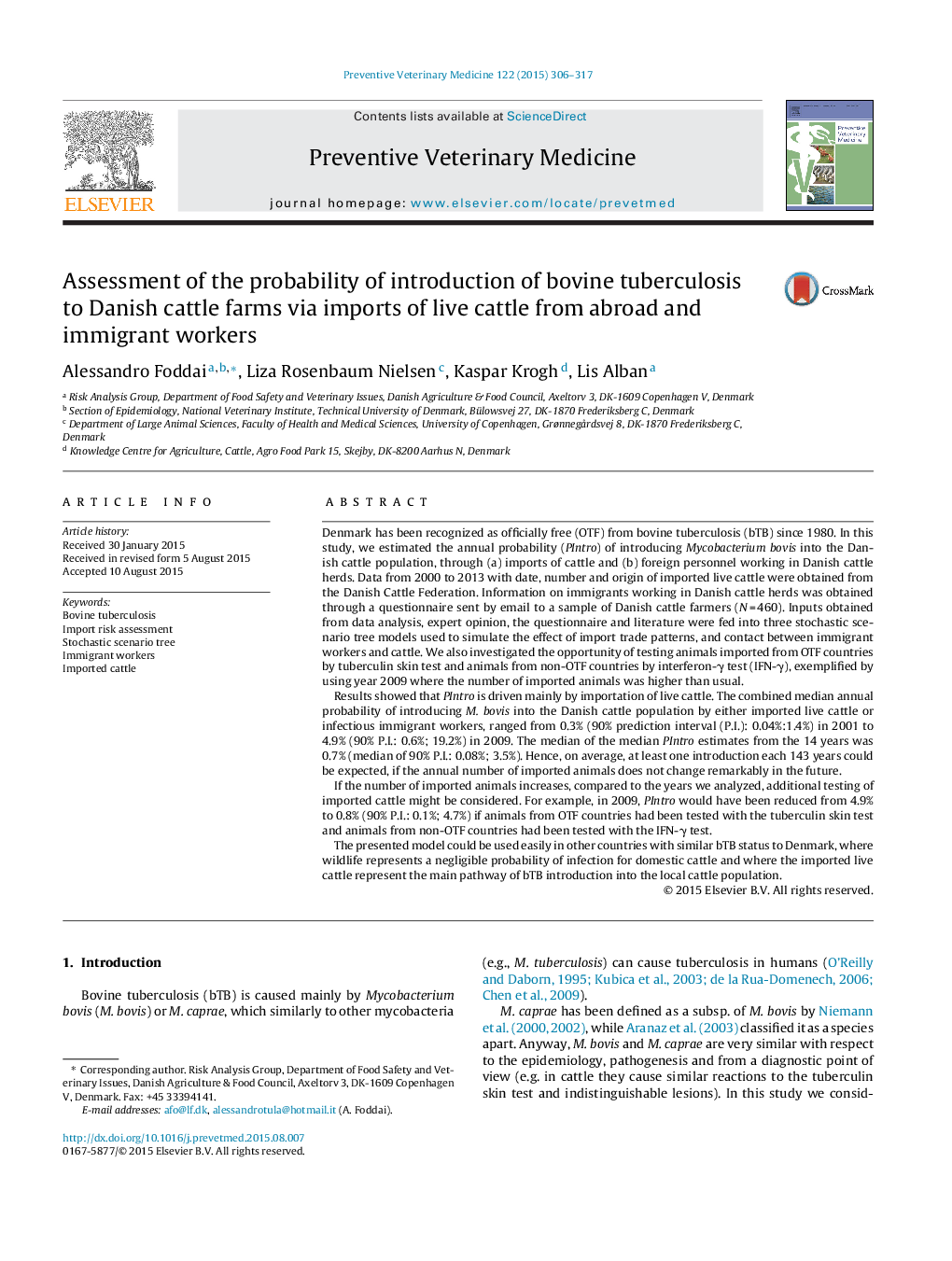| کد مقاله | کد نشریه | سال انتشار | مقاله انگلیسی | نسخه تمام متن |
|---|---|---|---|---|
| 5793242 | 1110001 | 2015 | 12 صفحه PDF | دانلود رایگان |
- The annual probability of introducing M. bovis in Danish cattle herds was estimated.
- Imports of live cattle from abroad and infectious immigrant workers were considered.
- On average at least 1 introduction of M. bovis each 143 years could be expected.
- Most of the risk was represented by the imported cattle.
- Testing all imported cattle would reduce the probability of introduction markedly.
Denmark has been recognized as officially free (OTF) from bovine tuberculosis (bTB) since 1980. In this study, we estimated the annual probability (PIntro) of introducing Mycobacterium bovis into the Danish cattle population, through (a) imports of cattle and (b) foreign personnel working in Danish cattle herds. Data from 2000 to 2013 with date, number and origin of imported live cattle were obtained from the Danish Cattle Federation. Information on immigrants working in Danish cattle herds was obtained through a questionnaire sent by email to a sample of Danish cattle farmers (N = 460). Inputs obtained from data analysis, expert opinion, the questionnaire and literature were fed into three stochastic scenario tree models used to simulate the effect of import trade patterns, and contact between immigrant workers and cattle. We also investigated the opportunity of testing animals imported from OTF countries by tuberculin skin test and animals from non-OTF countries by interferon-γ test (IFN-γ), exemplified by using year 2009 where the number of imported animals was higher than usual.Results showed that PIntro is driven mainly by importation of live cattle. The combined median annual probability of introducing M. bovis into the Danish cattle population by either imported live cattle or infectious immigrant workers, ranged from 0.3% (90% prediction interval (P.I.): 0.04%:1.4%) in 2001 to 4.9% (90% P.I.: 0.6%; 19.2%) in 2009. The median of the median PIntro estimates from the 14 years was 0.7% (median of 90% P.I.: 0.08%; 3.5%). Hence, on average, at least one introduction each 143 years could be expected, if the annual number of imported animals does not change remarkably in the future.If the number of imported animals increases, compared to the years we analyzed, additional testing of imported cattle might be considered. For example, in 2009, PIntro would have been reduced from 4.9% to 0.8% (90% P.I.: 0.1%; 4.7%) if animals from OTF countries had been tested with the tuberculin skin test and animals from non-OTF countries had been tested with the IFN-γ test.The presented model could be used easily in other countries with similar bTB status to Denmark, where wildlife represents a negligible probability of infection for domestic cattle and where the imported live cattle represent the main pathway of bTB introduction into the local cattle population.
Journal: Preventive Veterinary Medicine - Volume 122, Issue 3, 1 December 2015, Pages 306-317
